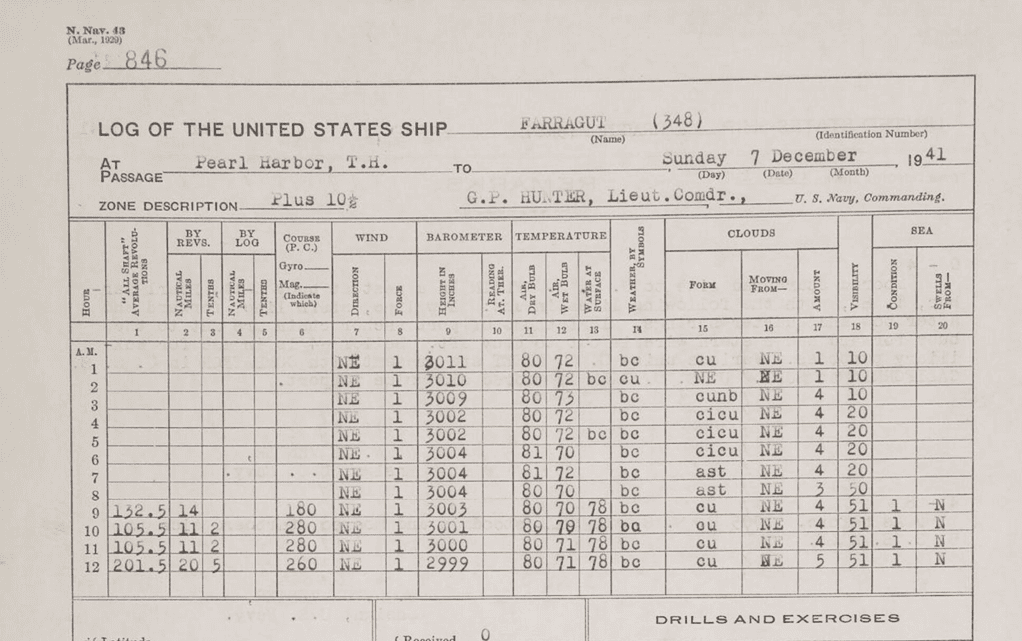While our oceans have gradually warmed since the start of the 20th century, there was a particularly warm period during World War II (1941-1945) that scientists haven’t been able to fully understand. Now, weather data recovered from several ships bombed by Japanese pilots at Pearl Harbor could help unlock the old mystery.

Weather observations over the ocean are very important to assess climate change, especially sea surface temperature and marine air temperature. But during wartime, these observations are skewed. For instance, weather logs during WWII were mostly taken during the day, because the nighttime was more vulnerable to bombing. Also, because of all the war raging on, you’re limited in where and how you can take measurements.
The new study tells the story of the recovery of World War II weather data that comes from 19 US ships. Its rescue was possible thanks to volunteers who transcribed over 28,000 logbook images from ships attacked at Pearl Harbor.
“Disruptions to trade routes in World War II led to a significant reduction in marine weather observations. Until recently, records from that time were still only available in classified paper documents. The scanning and rescuing of this data provide a window into the past,” Praveen Teleti, the researcher who led the study, said in a news release.
Weather observations
In 2017, the US released almost 200,000 pages of formerly classified Navy Command Files from the World War II (WW2) era. The files include many documents, maps, ship logbooks and photographs. In their study, the researchers from Reading University focused on the logbooks containing meteorological observations from back then.

The logbooks came from 19 different ships, including battleships, aircraft carriers, destroyers, and cruisers, most of which played pivotal roles in World War II events. All the ships were active in the Pacific at some point during the WW2 period, while some were present at Pearl Harbor during the attack by Japanese bombers on December 7, 1941.
For example, the USS Pennsylvania was hit when Pearl Harbor was attacked, causing the deaths of nine servicemen. But the ship remained in service. The USS Tennessee was also bombarded twice in December 1941, leading to the deaths of five people. It went back into service in February of 1942. Logs from both ships were included in the study.
“The scanning and rescuing of this data provide a window into the past, allowing us to understand how the world’s climate was behaving during a time of tremendous upheaval,” Teleti said. “We are very grateful to the global team of citizen scientists for transcribing these observations and creating a huge dataset.”
The limitations in how weather logs could be taken during WWII may have led to slightly warmer temperatures being recorded. For decades, researchers have wondered about what is now called “the WW2 warm anomaly”. Previous studies have suggested that the period wasn’t actually warmer, and changes in measurement methods are what explains this anomaly. Now, the newly found logs may finally help to resolve this mystery.
The study was published in the Geoscience Data Journal.






